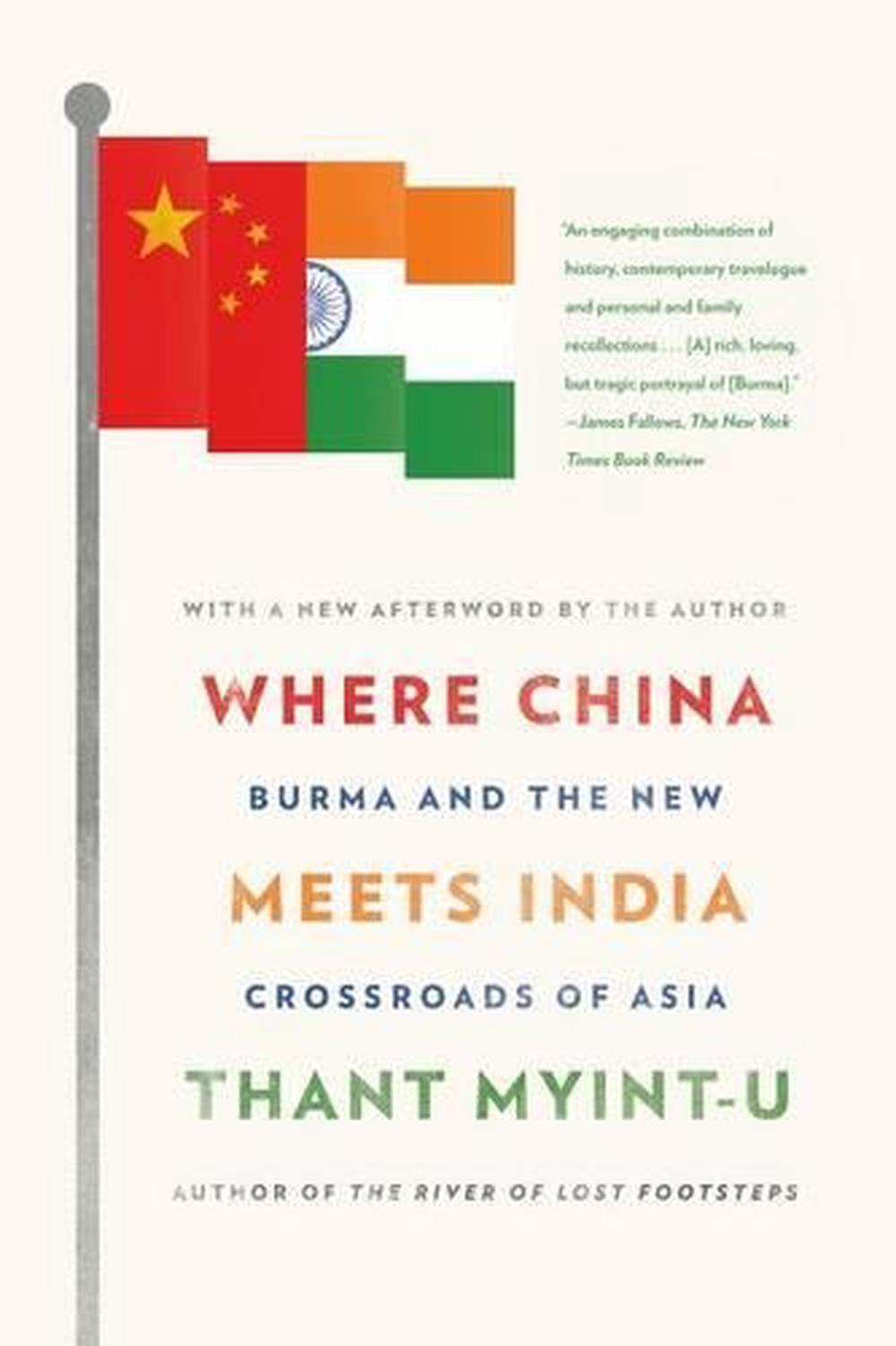
Where China Meets India: Burma and the New Crossroads of Asia
by Thant Myint-U
Thant Myint-U's "Where China Meets India" is a vivid, searching, timely book about the remote region that is suddenly a geopolitical center of the world.
From their very beginnings, China and India have been walled off from each other: by the towering summits of the Himalayas, by a vast and impenetrable jungle, by hostile tribes and remote inland kingdoms stretching a thousand miles from Calcutta across Burma to the upper Yangtze River.
Soon this last great frontier will vanish—the forests cut down, dirt roads replaced by superhighways, insurgencies crushed—leaving China and India exposed to each other as never before. This basic shift in geography—as sudden and profound as the opening of the Suez Canal—will lead to unprecedented connections among the three billion people of Southeast Asia and the Far East.
What will this change mean? Thant Myint-U is in a unique position to know. Over the past few years he has traveled extensively across this vast territory, where high-speed trains and gleaming new shopping malls are now coming within striking distance of the last far-flung rebellions and impoverished mountain communities. And he has explored the new strategic centrality of Burma, where Asia's two rising, giant powers appear to be vying for supremacy.
At once a travelogue, a work of history, and an informed look into the future, "Where China Meets India" takes us across the fast-changing Asian frontier, giving us a masterful account of the region's long and rich history and its sudden significance for the rest of the world.
Paperback
English
Brand New
Author Biography
Thant Myint-U, educated at Harvard and Cambridge, has served on three United Nations peacekeeping operations, in Cambodia and in the former Yugoslavia, and was more recently the head of policy planning in the UN's Department of Political Affairs.
Review Quote
[ Where China Meets India ] possesses a heartfelt and welcome optimism, giving voice to a desire for connections that exceeds all notions of foreign policy, geopolitics or business and becomes, instead, about people encountering each other in all their glorious difference.
Excerpt from Book
WHERE CHINA MEETS INDIA (Irrawaddy Dreaming) Before there was Rangoon, there was the Shwedagon pagoda. The legend goes something like this. Twenty-five centuries ago, two merchant brothers named Tapussa and Bhallika met the Buddha, by chance, just days after his Enlightenment at Bodh Gaya, in northern India. They heard his teachings on how to respond to the generally unsatisfactory nature of human experience. They became amongst his first followers, presenting him with an offering of rice cakes and honey and asking for a token of their encounter. The Buddha gave them eight strands of hair from his head. The Burmese believe that Tapussa and Bhallika were from lower Burma and that on their return home they placed the hairs in a jewelled casket and enshrined the casket deep within what would become the Shwedagon pagoda. The pagoda sits today in the middle of Rangoon, a sprawling city of five million people, on the only hill for miles around. It is an enormous golden structure nearly 400 feet high, shaped something like an upside-down funnel, with an octagonal base, a rounded dome, and then a long spire. The lower sections are covered in gold leaf, the upper sections in plates of solid gold. Altogether the Shwedagon is said to be enveloped in no less than sixty tons of gold. ''More than in all the vaults of the Bank of England'', the Burmese used to say during the days of British rule. At the top the spire is encrusted with thousands of precious stones as well as diamonds totalling 2,000 carats. Archaeologists and historians are uncertain about the true age of the Shwedagon. It is known that the pagoda (in its current form) was built in the fifteenth century, but that it was built on top of far older structures, likely dating back at least to the early centuries AD. A treasure chamber doubtless exists within its innermost recesses. The Shwedagon can be seen from almost anywhere in the city, reflecting the sun by day and floodlit at night. There is perhaps no other city in the world as dominated, physically and spiritually, by a religious site as Rangoon is by the Shwedagon. Rudyard Kipling, after a visit in 1889, described it as ''a golden mystery'' and ''a beautiful winking wonder that blazed in the sun''. Thirty-three years later, Somerset Maugham, who had stopped briefly in Rangoon, remembered that the Shwedagon ''rose superb, glistening with its gold like a sudden hope in the dark night of the soul''. It was dusk when I arrived at the Shwedagon. Statues of two giant griffins or chinth
Details

